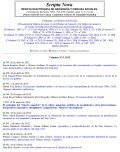The Urban System in Spain
Keywords:
urban systems, interaction value, polycentrism, sub centersAbstract
The specialized literature has proposed various approaches to the delimitation of urban and metropolitan systems. Administrative aspects (administrative units historically inherited), morphological (urban continuum), some linked to the economies of agglomeration (population and employment density, urban economic activities, ...) or functional interaction (home-work commuting) have been used for the definition of a metropolitan area. At the same time it has developed in recent years, an extensive literature that has come to reveal the progressive trend of the metropolitan areas to the polycentrism. There is no doubt that the monocentric city paradigm, structured around a single CBD, is broken. The contemporary metropolises have seen the emergence of the phenomenon of the sub centers. However, few efforts have been directed to address the two aspects together: a) the urban-metropolitan delimitation and b) the analysis of its internal structure.
This paper addresses the challenge of defining both the metropolitan systems and their internal composition, structured or not around different sub centers. The methodology developed of the Interaction Value simultaneously allows delimiting these two levels of urban structure: the metropolitan system as a whole and the subsystems articulated around the emerging or consolidated sub centers, by measuring the functional relationships between housing and workplaces. At the same time, the Interaction Value assesses the degree of polycentrism beyond the simple identification of sub centers developed in the literature.
In this sense, and using the mobility matrix supplied by the Census of 2001, this paper delimitates the urban and metropolitan systems in Spain, and presents new results concerning the internal structure of such systems.
Downloads
Published
Issue
Section
License
Los autores que publican en esta revista están de acuerdo con los siguientes términos:
- Los autores conservan los derechos de autoría y otorgan a la revista el derecho de primera publicación, cin la obra disponible simultáneamente bajo una Licéncia de Atribución Compartir igual de Creative Commons que permite compartir la obra con terceros, siempre que estos reconozcan la autoría y la publicación inicial en esta revista.
- Los autores son libres de realizar acuerdos contractuales adicionales independientes para la distribución no exclusiva de la versió de la obra publicada en la revista (com por ejemplo la publicación en un repositorio institucional o en un libro), siempre que se reconozca la publicación inicial en esta revista.





